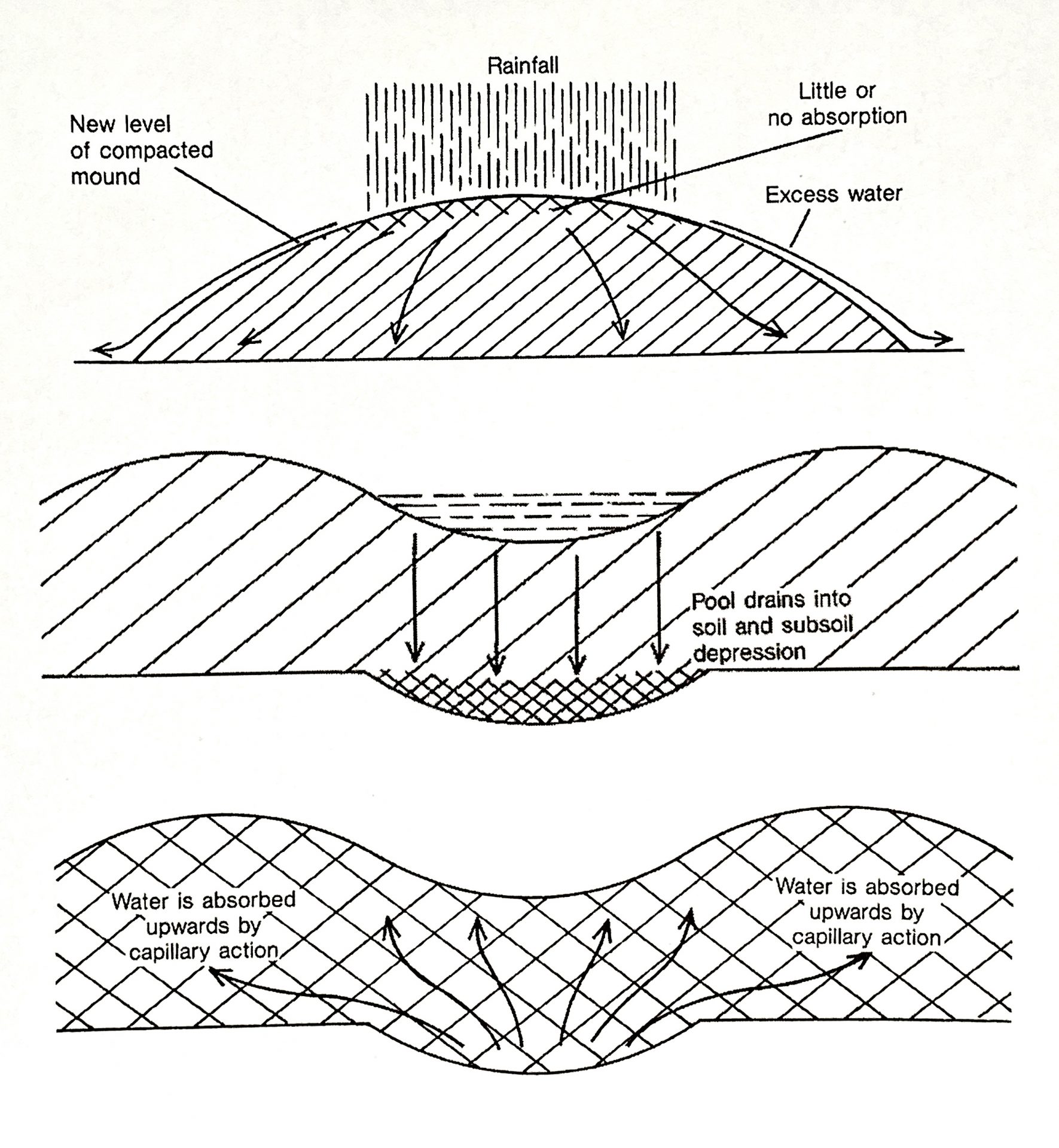Using mounds and channels in your garden generally results in successful plant growth and with Australian native plants very spectacular growth. This is helped by water channelling into depresssions during high rainfall periods.
One of the prime elements of a great garden is good drainage. In many natural soil profiles, over a period of time some plants ‘go off’. They grow well for a period, then suddenly die or alternately flourish in rainy periods. Or they become sparse and miserable specimens in dryer periods. This is often due to poor drainage.
To maintain favourable garden conditions, raise the garden levels to form beds and mounds.

From “Creating an Australian Garden”, John Malcolm Hunt, Kangaroo Press in assoc with SGAP NSW Ltd 1986, ISBN 0 86417 097 1
The raised garden mounds should also be channelled by the creation of shallow depressions forming gullies, holes and valleys which are open ended and shaped like a saucer or a swale to catch surface water.
Below the mound, shape the subsoil to catch and retain excess water. This means that in rainy periods the water soaks down to the lower levels. From here it is absorbed upwards by capillary action into the mounded garden.
This technique will also help deal with the drying effects of climate change. Using mounds and channels in your garden will help you with successful growing of native plants.

Dry creek bed and mounded beds in Neil Marriott’s garden
For more information on using mounds, see this story.
 Australian Native Plants Society (Australia)
Australian Native Plants Society (Australia)